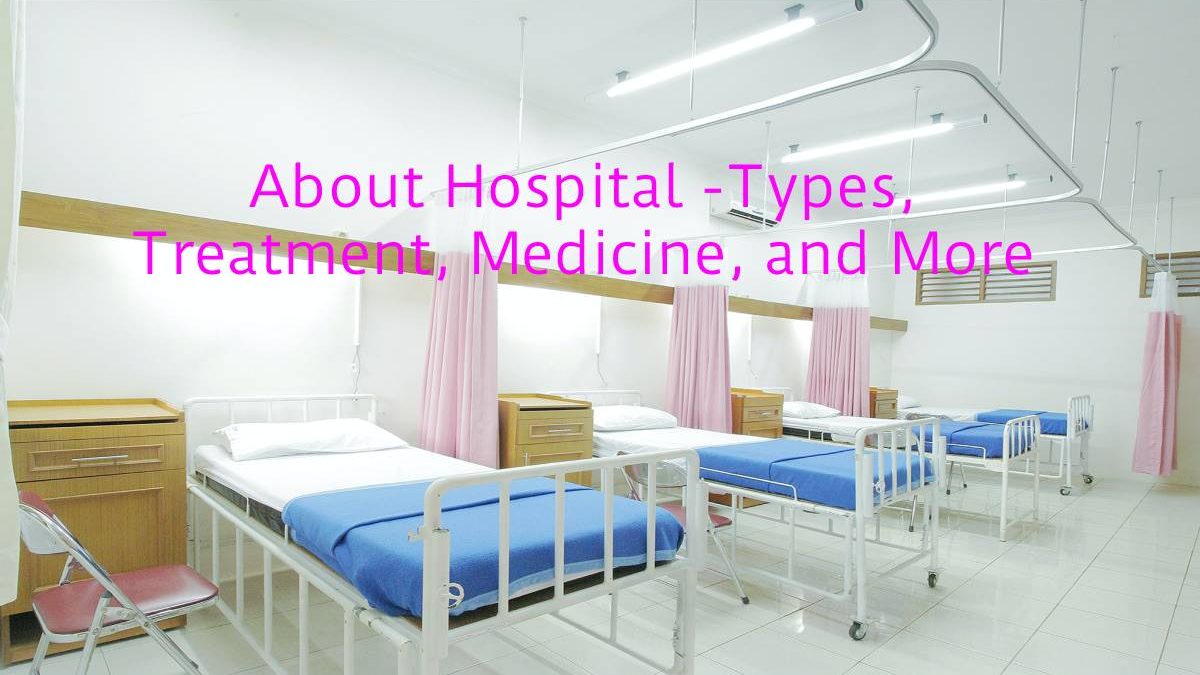Table of Contents
About Hospital
A hospital is a complex institution with an organized medical and nursing staff and permanent facilities, offering a wide variety of medical services, including surgery, for those who require more intensive treatment or observation. It also includes facilities to attend emergencies, newborns and infants, various outpatient consultations, and the so-called “day hospital,” where cures and care are carry out without permanent hospitalization of the patient.
Hospitals are not only dedicated to diagnosis and cure but are also centres of research and training for future doctors.
Types of Hospitals
- Hospital central.
- Convalescent hospital.
- Women’s hospital (maternity and gynaecology)
- Men’s hospital (andrology)
- General Hospital.
- Geriatric hospital
- Maternal and child hospital (gynaecology and paediatrics).
Treatment
- Red treatment area
A minimum of two hours of surgical care is require to treat a polytraumatic patient. In an area with a limit number of operating rooms, it will be impossible to provide simultaneous surgical care to many victims requiring such care.
Consequently, setting up a specific area where code red victims will receive appropriate care is necessary. This area for Shock-Trauma care will be called the “Red Treatment Area.” It must be in charge of an emergency specialist or an anesthesiologist and preferably locate in the Emergency Department, equip to treat patients in sudden extreme severity.
- Yellow treatment area
Victims with a yellow code will be sent immediately after triage to a surgical ward that has been cleared during the activation phase for that purpose. This area will be under the orders of a hospital doctor.
The victim’s condition must be continuously monitor, reassess, and maintained. If her condition worsens, she should be move to the red area.
- Green treatment area
These victims should not be transfer to the main hospital but refer to health centres or clinics. However, when the prehospital management system fails, many victims in that category will arrive at the hospital. Consequently, a waiting area should be planned for these victims, being the most convenient to locate it away from the other care areas. These victims should be transport to a nearby health centre or clinic.
- Area of victims with no hope of survival
For these patients, who require only supportive care, it is recommend that they be kept in a previously clearly medical ward during the activation phase.
- Deceased area (black category)
The plan must contemplate a space large enough to accommodate a minimum of ten corpses in acceptable conditions.
Medicines

Company Medicine
Around 90,000 annual work hours are lost due to ill health due to different diseases. These statistics could decrease if we work together since Hospital Metropolitan has a department dedicated to this service. With our experience, we know how to help your company, always satisfying our mission of bringing the best medicine at the best price.
Our medical concierge team consists of more than 100 hospitality specialists from 30 countries whose goal is to advise you and be there for you during your visit to Johns Hopkins, where you can take advantage of the most advanced medical services in an ultra-modern hospital.
Services of the Hospital
With the expansion of universal health coverage in countries with public health systems, the demand for hospital services has reach unprecedented heights. The most significant growth has been the demand for outpatient services.
The developing need for outpatient services has encourage the creation of health courses and new centres dependent on the hospital, such as health centres and satellite clinics to treat drug and alcohol addiction. Within hospitals, efforts have been directing at promoting outpatient care, social services, or creating educational programs for patients and the community and outpatient psychiatric care.
Whenever, help patients die with dignity. Patients make decisions regarding pain relief, may have personal belongings (including animals), visitors are allow at any time. And they can choose to die at home. Some hospices also offer teams of therapists who provide maintenance to family members.
Rising Hospital Costs
Two main factors have cause the current exaggerate increase in hospital costs, it is the cost of new equipment. And needs for organ transplants, kidney dialysis, radiation therapy for cancer, and many other rapidly changing treatments.
In addition, add to the expense of the modern and expensive diagnostic equipment and the high demand for tests that doctors need to establish an ample diagnosis.
This includes ensuring hospitals have independent financing and actions that seek to achieve administrative proficiency by hiring managers. Competition between societies to offer health services is expecting to reduce their costs.
Conclusion
However, Hospital is the space in which all kinds of health-related services are developing. Therefore, disease diagnose in these facilities, and different treatments are carry out to restore patients’ health.
Also Read: Importance of Makeup Tips – Introduction, Types and More


